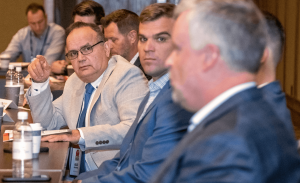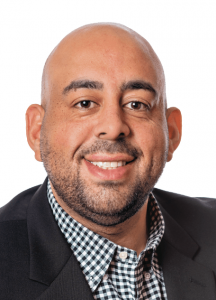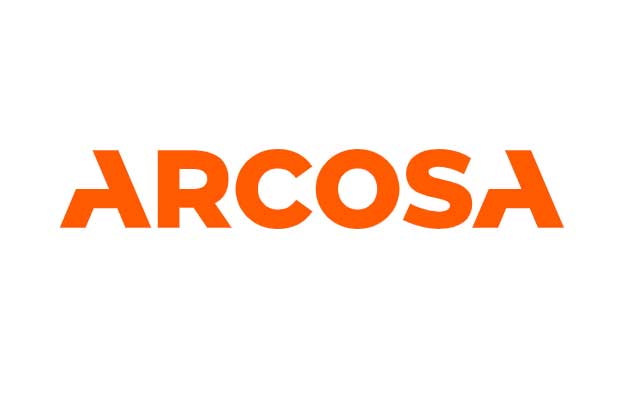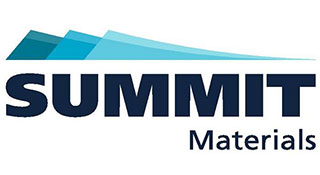The following transcripts were edited from two concurrent discussions at this year’s Pit & Quarry Roundtable & Conference. The transcript from one session begins in this post. This conversation was edited for brevity and clarity.

P&Q: The end of the pandemic is near. Moods are improving, and optimism is becoming more commonplace. Producers: What are your expectations in terms of aggregate demand for the rest of 2021? Are you prepared to meet higher demands? Categorically, what might the nonbuilding (i.e., roads, bridges), nonresidential and residential markets be capable of delivering? Do you have an early beat on what 2022 might look like for your business? Equipment suppliers and others: What are your business expectations for the rest of the year, and how are you forecasting equipment sales to the aggregate industry to be? What dynamics are most at play, and what potential challenges do you foresee this year and into 2022?
ALEX KANARIS (VDG): 2020 was not a great year for any one of us. My company is a manufacturer of drum motors. Getting raw material like steel and others is a challenge. Fortunately for 2021, our orders have increased exponentially. We’re fortunately 18 to 19 percent up. One of the reasons our product has been doing well is due to advertising and bringing a lot of awareness to the market. The only thing I would recommend going forward is to suppliers: If we’re going to get over this, let’s buy American. Like everything that we produce – steel made in the United States with a U.S. label. We still sometimes have a hard time competing with other equipment manufacturers because of equipment coming from China or South America. So our recommendation is to get everybody on board and go forward with industries right here in this country.

ELLIOT ARCHIBALD (SUPREME MANUFACTURING): As an OEM, we encountered a threat last year that’s a common frustration and headache for all producers. It is permitting. For anybody who’s not familiar with our company, we’re a small company based in Pennsylvania that designs and builds clamshell dredges for deep water mining. A lot of our sales cycles revolve around customers who get permits to go deeper in their sand and gravel operations. We had sales that were all but a done deal because the customers had permits that were all but a done deal. But then, because of elections or, in a lot of cases, new governors, they said no new permits. There’s a real threat there. It seems exaggerated right now, but if they can’t get new permits they could run out of reserves.
JASPER STEM (NORTH CAROLINA AGGREGATES ASSOCIATION): Our members are trying to get permits. They’re following all the rules to get the permit, but it’s a lot harder now. That’s really got me scared. Our producers are scared. North Carolina is where the current administrator for EPA (the U.S. Environmental Protection Agency) came from, and he was really big on that. So we’ve got this going on at the state level, and it’s going to be going on at the federal level. Future permits have really got us concerned. Are you going to be able to get your permits? Are the permits going through right now going to get stopped? With expansions, one of the problems is you’ve got a footprint and you just want to modify and increase your footprint. We’re not sure if we’re going to be able to do that.

KAREN HUBACZ-KILEY (BOND CONSTRUCTION CORP.): Permitting is difficult. You need to be your own best advocate. If you don’t go to Congress, they don’t know what’s going on – and they want to hear from you. They’re the only ones who are going to be able to change that.
MICHAEL JOHNSON (NATIONAL STONE, SAND & GRAVEL ASSOCIATION): Yes, permitting is a huge problem – and it’s only getting worse. At the federal level, we have tried to address that with some changes to federal policy. We are happy that the Senate Environment & Public Works Committee included one federal decision in their recent highway bill – their surface reauthorization that they marked up. That is a good step in the right direction. It passed unanimously out of that committee with a bipartisan vote. You had Republicans and Democrats expressing support for one federal decision. What we found very effective is explaining to lawmakers that the infrastructure money you’re approving and the spending you’re wanting to do to build infrastructure, to do maintenance or even to do new capacity, is not going to go as far because of the permitting process. It costs money. It costs time. It impacts the ability to create jobs, and you feel that impact locally. Once they get that on both sides of the aisle, we see them think about it a little bit differently.
JONATHAN HART (WASHINGTON ROCK QUARRIES): At one time, if you knew who was involved in the permitting process and knew the players down at the local level, you were able to get some traction. Now, you could send an email, maybe make a phone call to tell them: ‘Hey, we need this done, and we need it done sooner rather than later.’ But they’re all working from home. With the permitting process, timeframes have doubled and tripled just to get simple permits. We tried to get a permit to harvest timber to clear off some property on our site. Normally, that’s a two- or three-week process. You pay a fee and you’re good to go. Now, ‘this guy’ is working from home, ‘that guy’ is working from home, ‘this person’ is working from home – and they all have to communicate. And it turns into this email chain where each email adds five days onto the permitting process. You end up two months later on and you still don’t have a permit.

AHMED HELMY (TANDEM PRODUCTS): We’re a manufacturer of polyurethane, and we learned a lot about ourselves last year in terms of what our people are capable of. That was really outstanding. Obviously, there was a decrease in travel, which showed how resilient our distribution channel is and our customers are. So we learned a lot about ourselves last year. But going into this year, we had to make a lot of decisions in terms of budgeting, marketing and travel. One of the things I wanted to come here to do is learn about what others are looking at in terms of what is sustainable in terms of what we learned.
VINNIE ROCCO (AMCAST): 2020 obviously was not a great year, but it provided a unique opportunity to focus ‘backwards’ for a moment on your business – on efficiency, on whether or not you have to go and see a customer right off the bat. Maybe you can have a couple of Zooms. We learned to leverage Microsoft Teams quite a bit. So it was a unique opportunity to reflect inward and see where we could be more efficient.












